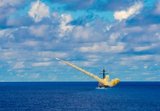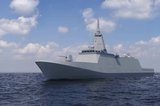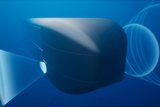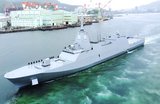I2C maritime security programme nears completion
The I2C maritime security and surveillance programme being carried out by DCNS is set to complete in July 2014, with the final phase of testing now underway in the Bay of Toulon. The programme will conclude with the presentation of results to the European Commission in Brussels on 11 September 2014.
I2C stands for ‘Integrated System for Interoperable sensors and Information sources for Common abnormal vessel behaviour detection and Collaborative identification of threat.’ The programme is part of the maritime component of the European Surveillance project, and aims to develop a common - multinational and interoperable - border surveillance system that can detect and identify in real time illegal and criminal activities conducted at sea.
The I2C system acquires information from multiple sources, including coastal radars, aircraft and ships (via AIS3), and observation satellites. This data is analysed using high-performance algorithmic software to correlate and exploit all the information to assess vessel trajectories and activities dynamically, interrogate databases and automatically raise alerts according to established rules in consultation with the operational authorities.
For each alert, the system provides precise hypotheses concerning the nature of the illegal activity; and operators can define the ‘detection rules’ settings to detect specific types of situations.
This is the second phase of the programme, and aims to evaluate the ship surveillance performance of the I2C system in the exclusive economic zone (EEZ), which extends up to 370km from the coastline. The system must be capable of continuous monitoring of the activities of almost 50,000 vessels of all sizes, in all weather conditions.
This last campaign is mobilising resources including Zeppelin dirigible, maritime patrol aircraft, coastal surveillance ship and stations. These resources have been boosted compared with the previous campaign, with greater integration in the dirigible of the Rockwell Collins France Frequency Modulation Continuous Waveform (FMCW) radar and the ONERA High Frequency Surface Waveform (HFSW) radar. The FMWC radar is capable of detecting very small boats (less than 6 metres long), while the HFSW radar can detect ships at up to 400km from the coastline. To improve the exhaustiveness of the situation picture generated by I2C, the system processes satellite images as well as data acquired from AIS receivers on satellites. This data will be supplied in near-real time.
Integrating all the system components this year, the campaign is going to enable end-to-end assessment of the I2C system, from ship detection through analysis of the alerts triggered in the system, according to selected rules with user-defined settings, to automated transmittal of reports to the authorities. The Maritime Police and French maritime rescue coordination centre will contribute to the preparation of scenarios and operate the I2C system in order to interpret the situation during the exercises.
More from Naval Warfare
-
![Mitsubishi eyes future with Australia’s Mogami selection]()
Mitsubishi eyes future with Australia’s Mogami selection
With Australia’s selection of the Mogami-class for Project Sea 3000, Mitsubishi is investigating local production in the next decade as potential export opportunities emerge.
-
![Thales’ new Sonar 76Nano could equip UK Royal Navy on anti-submarine warfare missions]()
Thales’ new Sonar 76Nano could equip UK Royal Navy on anti-submarine warfare missions
The new sonar is designed to equip uncrewed underwater vessels, with the potential to be used by the Royal Navy for its Atlantic Bastion and Atlantic Net missions.
-
![Hanwha wins Australian government approval to increase its stake in Austal]()
Hanwha wins Australian government approval to increase its stake in Austal
The contract would mean the two shipbuilders can collaborate strategically and enhance shipbuilding capabilities in Western Australia.






















